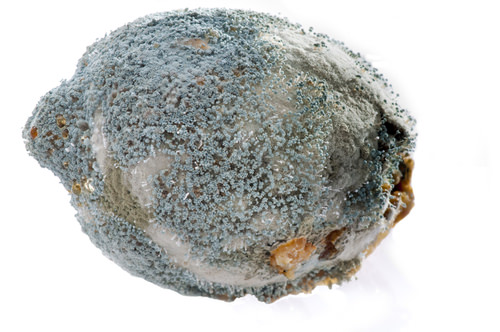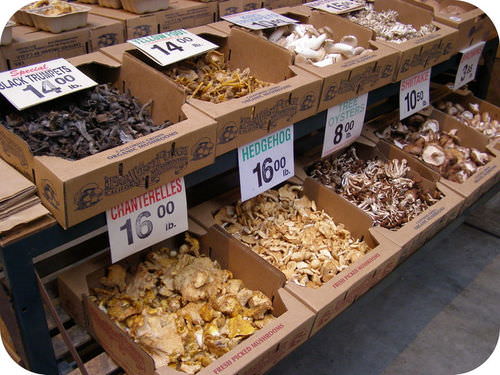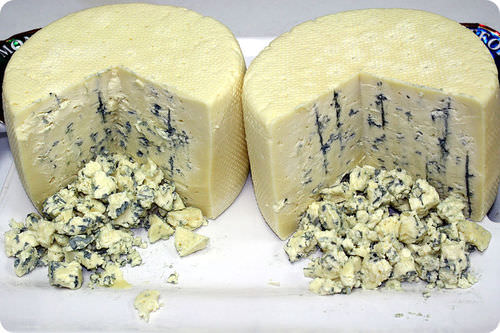8.6: Uso de Hongos
- Page ID
- 108089
\( \newcommand{\vecs}[1]{\overset { \scriptstyle \rightharpoonup} {\mathbf{#1}} } \)
\( \newcommand{\vecd}[1]{\overset{-\!-\!\rightharpoonup}{\vphantom{a}\smash {#1}}} \)
\( \newcommand{\dsum}{\displaystyle\sum\limits} \)
\( \newcommand{\dint}{\displaystyle\int\limits} \)
\( \newcommand{\dlim}{\displaystyle\lim\limits} \)
\( \newcommand{\id}{\mathrm{id}}\) \( \newcommand{\Span}{\mathrm{span}}\)
( \newcommand{\kernel}{\mathrm{null}\,}\) \( \newcommand{\range}{\mathrm{range}\,}\)
\( \newcommand{\RealPart}{\mathrm{Re}}\) \( \newcommand{\ImaginaryPart}{\mathrm{Im}}\)
\( \newcommand{\Argument}{\mathrm{Arg}}\) \( \newcommand{\norm}[1]{\| #1 \|}\)
\( \newcommand{\inner}[2]{\langle #1, #2 \rangle}\)
\( \newcommand{\Span}{\mathrm{span}}\)
\( \newcommand{\id}{\mathrm{id}}\)
\( \newcommand{\Span}{\mathrm{span}}\)
\( \newcommand{\kernel}{\mathrm{null}\,}\)
\( \newcommand{\range}{\mathrm{range}\,}\)
\( \newcommand{\RealPart}{\mathrm{Re}}\)
\( \newcommand{\ImaginaryPart}{\mathrm{Im}}\)
\( \newcommand{\Argument}{\mathrm{Arg}}\)
\( \newcommand{\norm}[1]{\| #1 \|}\)
\( \newcommand{\inner}[2]{\langle #1, #2 \rangle}\)
\( \newcommand{\Span}{\mathrm{span}}\) \( \newcommand{\AA}{\unicode[.8,0]{x212B}}\)
\( \newcommand{\vectorA}[1]{\vec{#1}} % arrow\)
\( \newcommand{\vectorAt}[1]{\vec{\text{#1}}} % arrow\)
\( \newcommand{\vectorB}[1]{\overset { \scriptstyle \rightharpoonup} {\mathbf{#1}} } \)
\( \newcommand{\vectorC}[1]{\textbf{#1}} \)
\( \newcommand{\vectorD}[1]{\overrightarrow{#1}} \)
\( \newcommand{\vectorDt}[1]{\overrightarrow{\text{#1}}} \)
\( \newcommand{\vectE}[1]{\overset{-\!-\!\rightharpoonup}{\vphantom{a}\smash{\mathbf {#1}}}} \)
\( \newcommand{\vecs}[1]{\overset { \scriptstyle \rightharpoonup} {\mathbf{#1}} } \)
\( \newcommand{\vecd}[1]{\overset{-\!-\!\rightharpoonup}{\vphantom{a}\smash {#1}}} \)
\(\newcommand{\avec}{\mathbf a}\) \(\newcommand{\bvec}{\mathbf b}\) \(\newcommand{\cvec}{\mathbf c}\) \(\newcommand{\dvec}{\mathbf d}\) \(\newcommand{\dtil}{\widetilde{\mathbf d}}\) \(\newcommand{\evec}{\mathbf e}\) \(\newcommand{\fvec}{\mathbf f}\) \(\newcommand{\nvec}{\mathbf n}\) \(\newcommand{\pvec}{\mathbf p}\) \(\newcommand{\qvec}{\mathbf q}\) \(\newcommand{\svec}{\mathbf s}\) \(\newcommand{\tvec}{\mathbf t}\) \(\newcommand{\uvec}{\mathbf u}\) \(\newcommand{\vvec}{\mathbf v}\) \(\newcommand{\wvec}{\mathbf w}\) \(\newcommand{\xvec}{\mathbf x}\) \(\newcommand{\yvec}{\mathbf y}\) \(\newcommand{\zvec}{\mathbf z}\) \(\newcommand{\rvec}{\mathbf r}\) \(\newcommand{\mvec}{\mathbf m}\) \(\newcommand{\zerovec}{\mathbf 0}\) \(\newcommand{\onevec}{\mathbf 1}\) \(\newcommand{\real}{\mathbb R}\) \(\newcommand{\twovec}[2]{\left[\begin{array}{r}#1 \\ #2 \end{array}\right]}\) \(\newcommand{\ctwovec}[2]{\left[\begin{array}{c}#1 \\ #2 \end{array}\right]}\) \(\newcommand{\threevec}[3]{\left[\begin{array}{r}#1 \\ #2 \\ #3 \end{array}\right]}\) \(\newcommand{\cthreevec}[3]{\left[\begin{array}{c}#1 \\ #2 \\ #3 \end{array}\right]}\) \(\newcommand{\fourvec}[4]{\left[\begin{array}{r}#1 \\ #2 \\ #3 \\ #4 \end{array}\right]}\) \(\newcommand{\cfourvec}[4]{\left[\begin{array}{c}#1 \\ #2 \\ #3 \\ #4 \end{array}\right]}\) \(\newcommand{\fivevec}[5]{\left[\begin{array}{r}#1 \\ #2 \\ #3 \\ #4 \\ #5 \\ \end{array}\right]}\) \(\newcommand{\cfivevec}[5]{\left[\begin{array}{c}#1 \\ #2 \\ #3 \\ #4 \\ #5 \\ \end{array}\right]}\) \(\newcommand{\mattwo}[4]{\left[\begin{array}{rr}#1 \amp #2 \\ #3 \amp #4 \\ \end{array}\right]}\) \(\newcommand{\laspan}[1]{\text{Span}\{#1\}}\) \(\newcommand{\bcal}{\cal B}\) \(\newcommand{\ccal}{\cal C}\) \(\newcommand{\scal}{\cal S}\) \(\newcommand{\wcal}{\cal W}\) \(\newcommand{\ecal}{\cal E}\) \(\newcommand{\coords}[2]{\left\{#1\right\}_{#2}}\) \(\newcommand{\gray}[1]{\color{gray}{#1}}\) \(\newcommand{\lgray}[1]{\color{lightgray}{#1}}\) \(\newcommand{\rank}{\operatorname{rank}}\) \(\newcommand{\row}{\text{Row}}\) \(\newcommand{\col}{\text{Col}}\) \(\renewcommand{\row}{\text{Row}}\) \(\newcommand{\nul}{\text{Nul}}\) \(\newcommand{\var}{\text{Var}}\) \(\newcommand{\corr}{\text{corr}}\) \(\newcommand{\len}[1]{\left|#1\right|}\) \(\newcommand{\bbar}{\overline{\bvec}}\) \(\newcommand{\bhat}{\widehat{\bvec}}\) \(\newcommand{\bperp}{\bvec^\perp}\) \(\newcommand{\xhat}{\widehat{\xvec}}\) \(\newcommand{\vhat}{\widehat{\vvec}}\) \(\newcommand{\uhat}{\widehat{\uvec}}\) \(\newcommand{\what}{\widehat{\wvec}}\) \(\newcommand{\Sighat}{\widehat{\Sigma}}\) \(\newcommand{\lt}{<}\) \(\newcommand{\gt}{>}\) \(\newcommand{\amp}{&}\) \(\definecolor{fillinmathshade}{gray}{0.9}\)
¿Qué crece en este limón?
¿Le creerías a la penicilina? La penicilina es un moho, que por supuesto es un hongo, uno que ha ayudado a millones, si no miles de millones, de personas.
Usos Humanos de los Hongos
Siempre que comes pizza, comes hongos, aunque no te guste tu pizza con champiñones. Eso es porque la masa de pizza contiene levadura. ¿Conoces otros alimentos que se hacen con hongos?
Hongos para la Alimentación
Los humanos han recolectado y cultivado hongos como alimento durante miles de años. La siguiente figura muestra algunos de los muchos tipos de hongos que la gente come. Las levaduras se utilizan en la cocción del pan y en la elaboración de bebidas alcohólicas. Otros hongos se utilizan en la fermentación de una amplia variedad de alimentos, incluyendo salsa de soja, tempeh y quesos. El queso azul tiene su aspecto y sabor distintivos debido al hongo que crece a través de él (ver Figura a continuación).
 Estas son solo algunas de las muchas especies de hongos comestibles que consumen los humanos.
Estas son solo algunas de las muchas especies de hongos comestibles que consumen los humanos.  Queso Azul. Las hebras de color azul oscuro que atraviesan este queso son un hongo. De hecho, ¡este queso está mohoso! El hongo es Penicillium roqueforti, un tipo de moho.
Queso Azul. Las hebras de color azul oscuro que atraviesan este queso son un hongo. De hecho, ¡este queso está mohoso! El hongo es Penicillium roqueforti, un tipo de moho. Hongos para Control de Plagas
Los hongos inofensivos se pueden usar para controlar bacterias patógenas y plagas de insectos en los cultivos. Los hongos compiten con las bacterias por los nutrientes y el espacio, y parasitan a los insectos que comen plantas. Los hongos reducen la necesidad de pesticidas y otros químicos tóxicos.
Otros Usos de los Hongos
Los hongos son útiles por muchas otras razones.
- Son una fuente importante de ácido cítrico (vitamina C).
- Producen antibióticos como la penicilina, que ha salvado innumerables vidas.
- Pueden ser genéticamente diseñados para producir insulina y otras hormonas humanas.
- Son organismos de investigación modelo.
Resumen
- Los humanos usan hongos para muchos propósitos, incluso como alimento o en la preparación de alimentos.
- Los humanos también usan hongos para el control de plagas.
- Además, los hongos pueden ser utilizados para producir ácido cítrico, antibióticos y hormonas humanas.
- Los hongos también son organismos de investigación modelo.
Revisar
- Describir dos formas en que los humanos usan los hongos.
- ¿Cómo se utilizan los hongos para controlar las plagas?
| Imagen | Referencia | Atribuciones |
 |
[Figura 1] | Crédito: Maja Dumat Fuente: http://www.flickr.com/photos/blumenbiene/5184802650/ Licencia: CC BY-NC |
 |
[Figura 2] | Crédito: Derek Wolfgram Fuente: http://www.flickr.com/photos/wolfgrams/4376802043/ Licencia: CC BY 2.0 |
 |
[Figura 3] | Crédito: Departamento de Agricultura de los Estados Unidos Fuente: http://commons.wikimedia.org/wiki/File:Montforte_Blue_Cheese.jpg Licencia: CC BY 2.0 |

